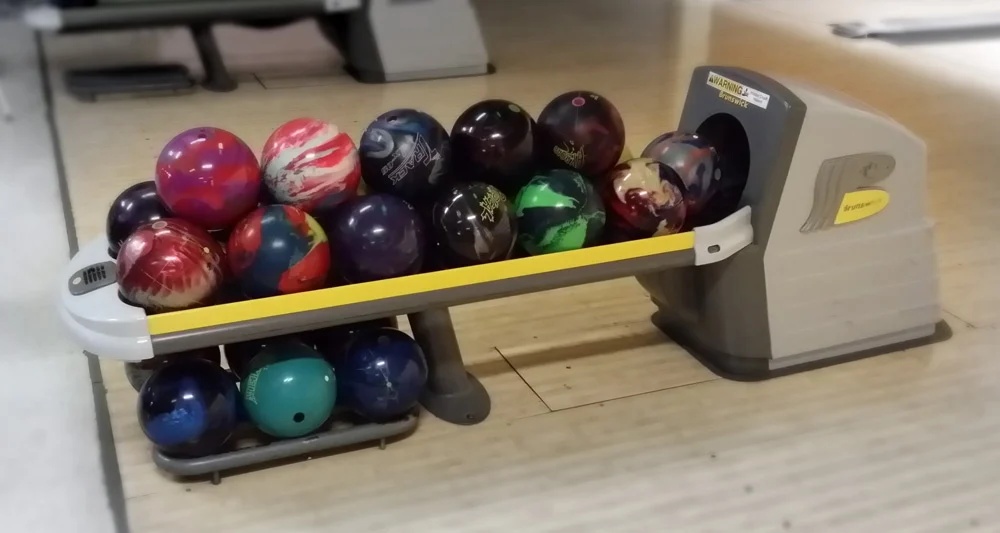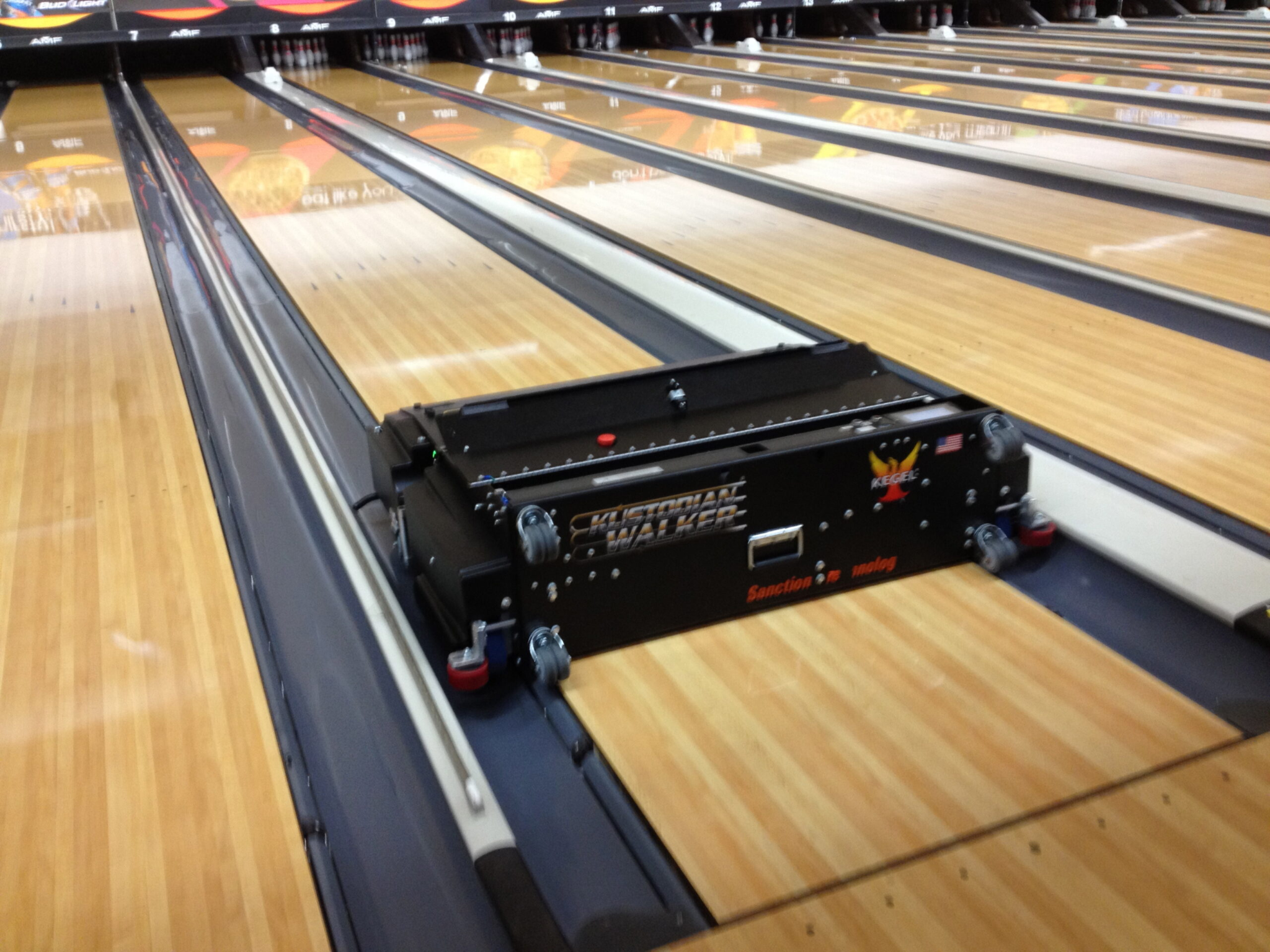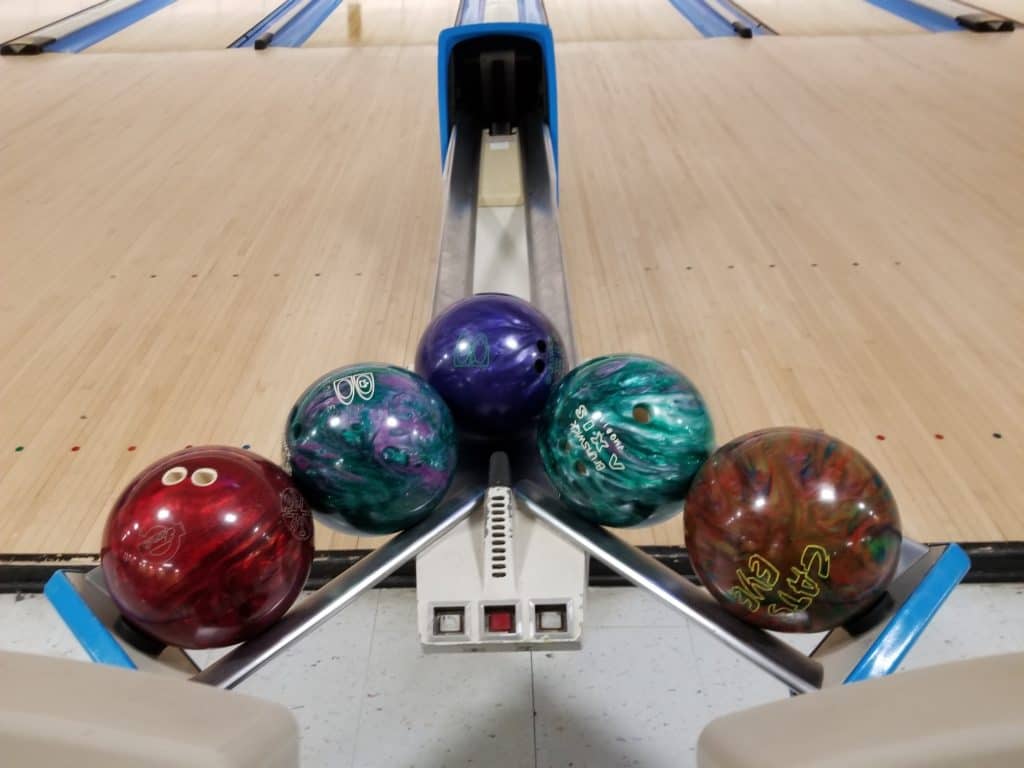Contents
- Bowling Balls for Heavy Oil Conditions: A Guide
Bowling Balls for Heavy Oil Conditions: A Guide
If you’ve ever found yourself struggling to get your ball to hook in heavy oil conditions, you’re not alone. Choosing the right bowling ball for such conditions can be a game-changer, literally! This guide is all about that – helping you understand the nuances of selecting the perfect bowling ball for heavy oil lanes.

Understanding Heavy Oil Conditions Lane
How To Know If Your Lane is Heavy Oil
You’ll notice your ball skidding or sliding more than usual. It may even struggle to hook or curve the way you expect it to.
Additionally, if you see the ball leaving a clear track or line of oil, that’s another tell-tale sign of a heavy oil condition.
Why Do They Heavy Oil The Lane?
Well, heavy oil on the lanes provides a protective layer for the wooden surface underneath, preventing it from getting scratched or damaged by the constant hurling of heavy bowling balls.
Secondly, it adds a degree of challenge to the game. A heavily oiled lane requires bowlers to adjust their technique and strategies, making the game more strategic and fun.
Do All Bowling Alleys Oil The Bowling Lane?
Absolutely, every bowling alley oils its lanes. However, not all alleys use heavy oil conditions. Some may opt for medium or light oil conditions, depending on the type of competition or the bowlers they typically cater to.

Effects of Heavy Oil Lanes on Bowling
Heavy oil conditions significantly affect a bowler’s performance and the bowling ball’s behavior in several ways.
- Higher Friction: Heavy oil creates a higher level of friction between the ball and the lane. This friction makes the ball slow down faster and makes it more difficult to gain speed.
- Reduced Hook Potential: Due to the increased friction and slower ball speed, the ball’s hook potential is reduced. This means the ball won’t curve as dramatically as it would on lanes with less oil.
- Adapted Techniques: The increased friction and reduced hook potential make it necessary for bowlers to adapt their throwing techniques. They may need to throw harder or adjust their swing to achieve the same results as they would on less oily lanes.
Mastering the Heavy Oil Lane
With a few adjustments to your bowling strategy, you can conquer the challenge
- Choose the Right Bowling Ball: Opt for a ball specifically designed for heavy oil conditions. These balls have a strong coverstock and aggressive core, which will help to cut through the oil and hook properly.
- Adjust Your Throw: Experiment with throwing the ball harder or with more spin. This can help to overcome the increased friction and make the ball hook.
- Aim for the Oil: Try to aim your bowling ball at the areas of the lane with the most oil. This can help to maintain ball speed and increase your chances of a strike.

Features of a Bowling Ball for Heavy Oil Lanes
Bowling balls made for heavy oil conditions have some features that really help them perform their best:
- Strong Coverstock: The coverstock, which is the outer surface of the ball, is usually made of a strong, durable material. This allows it to dig into the oil and hook, instead of sliding.
- Aggressive Core: The core of these balls is designed to be aggressive. In terms of bowling, “aggressive” means that the ball has a high hook potential, allowing it to curve strongly even in heavy oil conditions.
- Porosity: These balls are more porous, meaning they can absorb more oil. This allows them to maintain traction and continue hooking despite the heavy oil on the lanes.
- Weight: The weight of the ball also plays a significant role. Usually, heavier balls perform better on heavily oiled lanes as they can cut through the oil more effectively.
Which Type of Bowling Ball is Best For Heavy Oil Lane
The best bowling balls usually have an aggressive Asymmetric Core with a solid Reactive Resin Coverstock.
The solid coverstock gives the ball the grit it needs to manage the thick oil on the lanes, while the aggressive core maximizes the ball’s hook potential.
Should I Use a Plastic Ball for Heavy Oil Lane?
No, you should not!
These balls are designed with a smooth, non-absorbent coverstock which is great for dry conditions, but on a heavy oil lane, a plastic ball is likely to skid and struggle to hook. They lack the aggressive core and strong coverstock found in balls designed for heavy oil conditions. While they can be used for straight-line shots or spare shooting, they lack the traction needed to cut through heavy oil and make a significant curve.

Different Bowling Styles on Heavy Oil Lane Conditions
Different bowlers might have contrasting strategies when it comes to handling heavy oil lane conditions. Here are a few styles:
- Power Players: These bowlers rely on speed and revs to power through the oil. They often use balls with aggressive cores and strong coverstocks to maintain their high hook potential.
- Stroker Style: Strokers are known for their accuracy and control. In heavy oil conditions, they tend to play straighter angles and use balls with a strong coverstock to penetrate the oil and maintain a predictable ball reaction.
- Spinner or Helicopter Style: This unorthodox style is characterized by the ball spinning like a top or a helicopter blade. The ball’s spinning action helps it skim over the heavy oil rather than hooking into it. Spinners typically use lighter balls with a high flare potential.
- Two-Handed Style: Made popular by professionals like Jason Belmonte, this style generates a lot of revs and speed, making it effective for heavy oil conditions. Two-handed bowlers often use balls with aggressive cores and coverstocks to maximize hook and power through the oil.
Conclusion
A bowling ball with a strong coverstock, aggressive core, and greater weight will be more effective on heavily oiled lanes. Combining this with adjustments to your throw and targeting the oilier parts of the lane can greatly improve your performance. Whether you’re a power player, a stroker, a spinner, or a two-handed bowler, understanding these nuances will enhance your game and make you a formidable player regardless of the oil conditions.

Allow me to introduce myself – I’m Eric Wilkinson, a true bowling aficionado. The world of bowling culture has always fascinated me, and I’ve made the exciting decision to share my passion through writing. As I embark on this blogging adventure, my goal is to provide fellow enthusiasts with valuable insights, tips, and captivating stories. Through my blog, I hope to ignite a deeper appreciation for the sport and foster a sense of community among fellow bowlers. Join me on this thrilling journey as we explore the vibrant world of bowling together.
